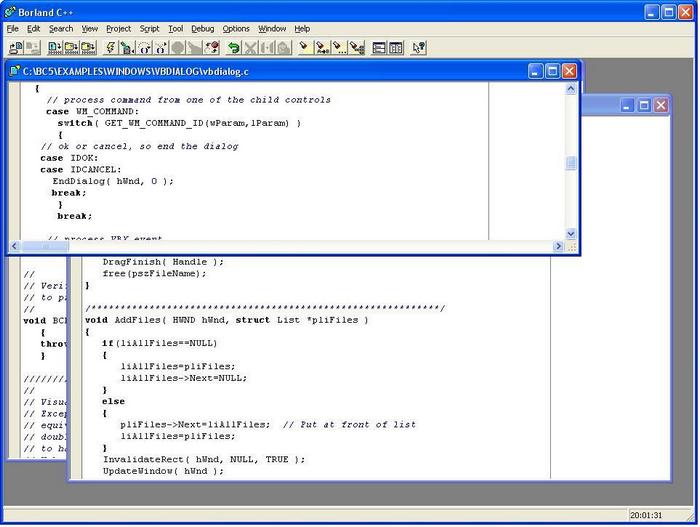
- #CODE BLOCKS WITH MINGW .EXE#
- #CODE BLOCKS WITH MINGW CODE#
- #CODE BLOCKS WITH MINGW DOWNLOAD#
- #CODE BLOCKS WITH MINGW WINDOWS#
So they are not in the src virtual folder as the rest of the OF-added files. When adding a new class the source file is added to a Sources folder and the header file is added to a Headers folder.

In the CB project (as generated by the ProjectGenerator) of all OF examples the files are placed in a virtual folder in CB called src. I haven’t found a way yet to change the default header file folder. Note: Unfortunately this has to be done manually, each time you add a class. Then the header file is placed in the src folder and thus both class files are in the same location. You can find it in the bottom left under “Header file” and then “Folder”.

Solution: To ensure the header file of a class is also added to the src folder, you can manually set the folder location in the “create new class” dialog box. So the location on the hard drive differs. When you add a new class in CB, the source file is placed in the src folder, but the header file is placed in the include folder. In all OF examples the source and header files are in the same folder (namely the src folder). In both cases the default behavior of codeblocks differs from the OpenFrameworks ProjectGenerator solution. There are two things relevant here, the location in a physical folder (read: where is the file on the hard drive) and the location in a virtual folder (read: where is the file in the codeblocks project). Perhaps, I’ll give Assembly language tutorial after some time.I encountered the same problem. Note::Assembly language is way faster than C++. So the compiler can distinguish between the functions which are overloaded the overloaded concept is explained in detail in Chapter 4.
#CODE BLOCKS WITH MINGW CODE#
When functions are overloaded their names appear the same in the C++ program, but in Assembly source code the names generated for the overloaded functions are different. Here is a reason! We know that while compiling C++ source code at some point, an assembly source code of the file is obtain (for more information go to compile-time and run-time, stack and heap, static and dynamic ).Īssembly language is the closest language to the machine language, so by looking at the Assembly source code some of the concepts of C++ like overloaded function can be explained. You may wonder why do we even need Assembly language source code While learning C++. a.out in the terminal and press ‘Enter’. To run the a.out file in Linux simply type.
#CODE BLOCKS WITH MINGW .EXE#
exe file and you will see the console screen with the output “ Hello world!“. This will produce ‘ a.exe‘ file(in Windows) and a.out in Linux. out (in Linux) file from command prompt and Terminal without using the Code::blocks, run the following command This will give you ‘ hello.s‘, which is the assembly source code of hello.cpp. Iii) Run the following command to get the assembly code of hello.cpp. cpp file.It also involve some other processes. An intermediate file is obtained after replacing alias name with the value defined by #define in the. This command will generate an intermediate file ‘ hello.i‘ file. This means if your hello.cpp is present in C drive, /D is not necessary but if your hello.cpp is present in D or E or any other drive use /D. D is not necessary if you are not changing the drive. For example, my hello.cpp file is present in “ C:\MY_PROGRm\hello“, the command is You can find your command prompt by going to search and type cmd then ‘Enter’. I) Start the command prompt(in Windows) or Terminal in Linux.
#CODE BLOCKS WITH MINGW WINDOWS#
Getting the assembly code in Windows and Linux. I)The GCC has already been included so, you can go to the next topic. V) Add the bin directory of the MinGW example-” C:\Program Files (x86)\CodeBlocks\MinGW\bin” to the Path and Iv)And -> ( Under ‘system variables’ find) Path and Ii)Find properties -> ( and look at left column) Advanced system settings and click on it. I) Go to computer-> and click right mouse button Adding the ‘ bin‘ directory to ‘ environment variables‘ *For Windows If you find it follow the steps given below.ġ.
#CODE BLOCKS WITH MINGW DOWNLOAD#
If you don’t find it go to this link and download the installer and run the. To check whether MinGW is present or not, go to the code::blocks installed directory and inside it you will find MinGW folder where all the compilers of C, C++, Fortran, etc.

If you have installed Code::blocks then MinGW has already been installed as it comes with the Code::blocks and it is the compiler of code::blocks. We cannot obtain an Assembly code of C++ program from code::blocks directly but we can from MinGW(GNU GCC compiler).


 0 kommentar(er)
0 kommentar(er)
